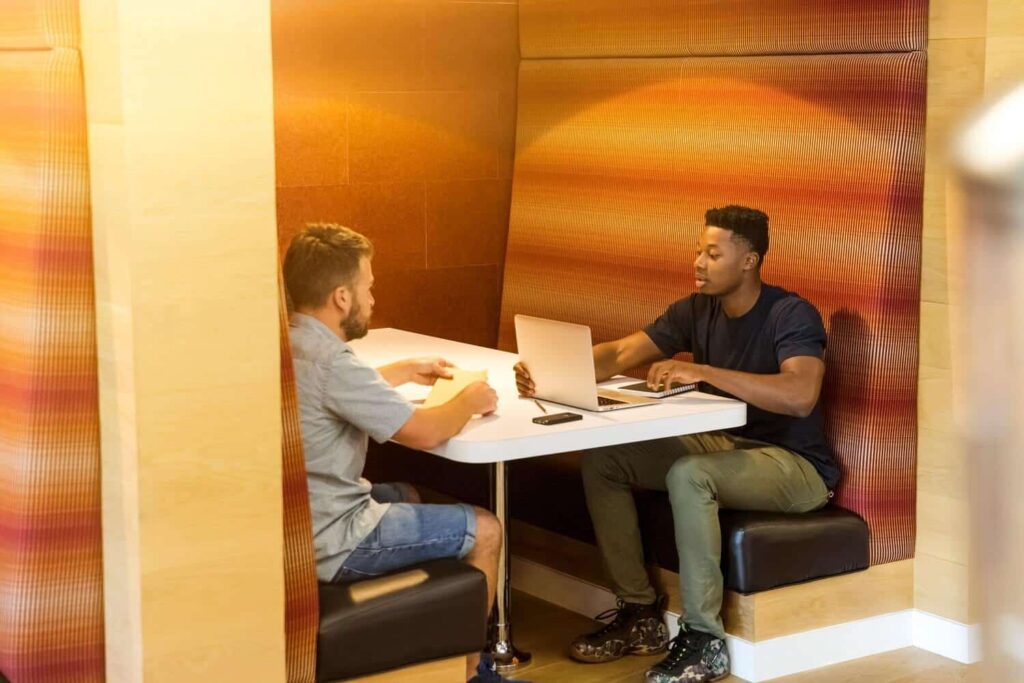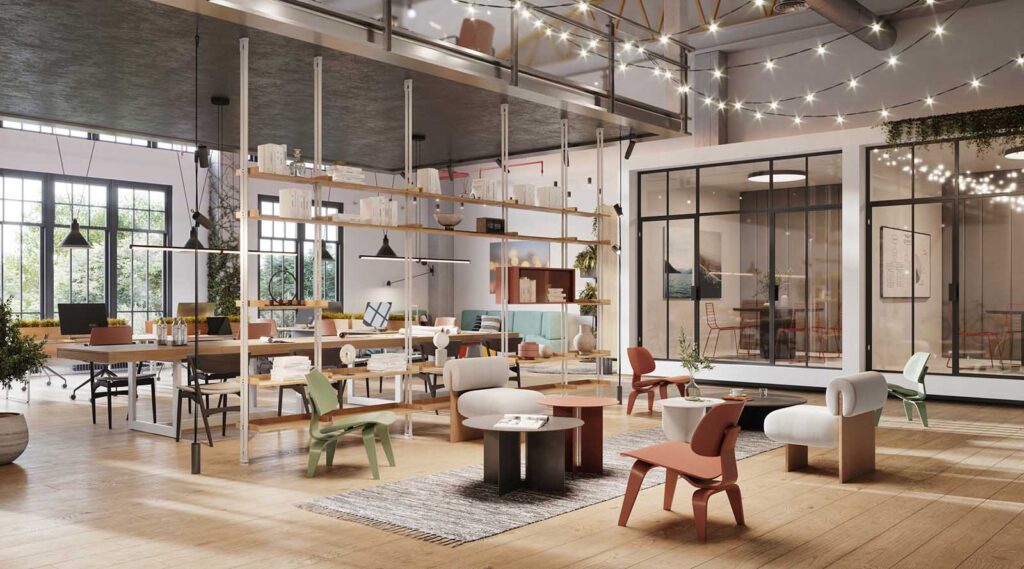The truth about live and artificial office plants
By Patrick Cwiklinski• 7 mins read•January 9, 2020

Percy Smith, Biophilic Design Consultant at Plant Plan, discusses what kind of plants are best suited for your office space and the debate surrounding live and artificial plants.
What is biophilic design? Biophilic design is a concept that increases occupancy connections to the natural environment through the use of plants and nature.
When it comes to biophilic design—an approach that connects building occupants with the natural environment—people have some pretty strong opinions. On one end of the spectrum, there are workplaces that want to enrich their employees’ well-being by providing live plants in their office space. On the other end, there are those who argue that you can get the same benefits with artificial plants that don’t die.
So who’s right? Percy Smith, Biophilic Design Consultant at Plant Plan, says there’s actually quite a bit more to it. The answer isn’t necessarily as simple as touting one plant style as better than the other. To get to the bottom of things, we spoke to Smith about his experience with biophilic design in office spaces, and the live vs. artificial plant debate.
On the Plant Plan website, it says that you often get the question “why should we have plants in our offices?” What do you see as the primary benefits of plants in an office environment from your personal perspective?
Smith: The design element behind office plants is pretty big right now, especially here in the United Kingdom. Office plants have been on the rise for a few years now and their popularity shows no sign of declining anytime soon. Another reason to have office plants is the well-being aspect, and there are a couple of points relating to that. The first point is the fact that plants are able to filter the air. We all know that plants absorb carbon dioxide and breathe out oxygen, but they do much more than that. Studies done by NASA and other organizations show that plants absorb harmful toxins and pollutants in the air, reducing the effects of sick building syndrome and improving employee well-being. The second point is that just being able to see plants around the office helps boost basic cognitive functions and memory tests. This is because humans are naturally wired to respond positively with plants and nature—it makes us happier and more comfortable to be in a space with plants.
There’s also a lot more to biophilic design than just plants. There are all sorts of different textures. We’ve just installed carpet tiles in our office that are meant to represent moss on a cobblestone street. Greens, browns, and wood and stone textures all help bring in natural finishes to a space to improve the biophilia. There’s also the old savannah hypothesis, which is centered around when humans lived in caves, they were happier when they saw trees and water. Bringing that same idea into an office space makes people see the space as more enriching and prosperous.
It’s about departing from the clinical white desk, white walls, and gray carpet standard that has been in office spaces for years, and bringing an element of nature to make people feel more at home. Businesses are starting to recognize that people respond well to things such as plants because we’re actually naturally wired to like them.
Additionally, if a business wants to adhere to the WELL Building Standard, there needs to be a certain number of plants, green walls, and water features in an office space to receive that certification.
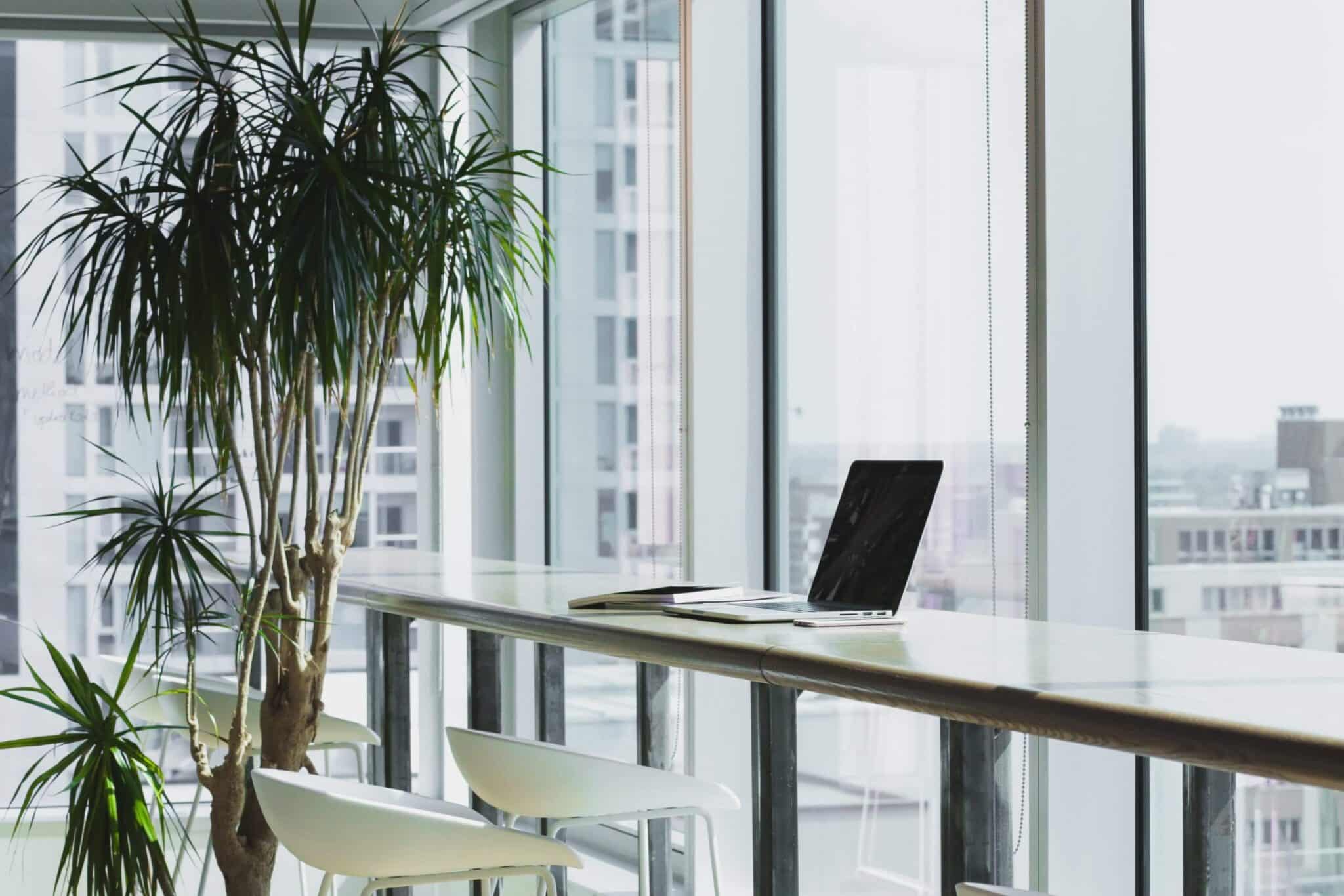
In terms of the types of office plants available on the market, what are some of the most popular options out there and what do you personally recommend?
Smith: When I first started working at Plant Plan, the trends were quite basic and sensible, with pots and plants and small palm trees making up the majority of the work we did. Around the time I started, moss walls had become more popular as an alternative to living walls, and more recently replica living walls and flower walls have come on the scene too. Once biophilic design started becoming a bigger trend, there was a shift towards more rustic styles. Concrete and wood became more prominent and “messier” planting styles emerged. Designers started making the most of artificial planting convenience and started implementing it on projects. This also has made artificial planting become far more realistic than ever before.
I remember doing a proposal for a client and they wanted trees that were popular in the 1970s: the fiddle-leaf fig (ficus lyrata) and the rubber plant (ficus elastica). These kinds of plants have really risen in popularity over the last two and a half to three years from what we’ve seen. Little succulents and cacti have also gained popularity as well.
The mainstays are still plants like the Kentia palm and Dracaena trees that a lot of offices have. Plants like the fiddle-leaf fig, rubber plants, and succulents are a lot trendier at the moment, but there’ll be a shift towards something else over time.
We do a bit of artificial planting as well. Some offices will have ceiling rafters and we’ll create artificial planting displays that hang from them. We did a project recently where we had ceiling tiles with plants coming through them. While artificial plants don’t add any air purification benefits, they still give a great visual benefit to an office space. We have found that sometimes a mix works well—we’ll install live plants on the ground and artificial plants in the ceiling or in other areas that plants wouldn’t survive very well in. This means you get the best of both worlds: live plants help with air quality and artificial plants introduce splashes of green where live plants wouldn’t survive.
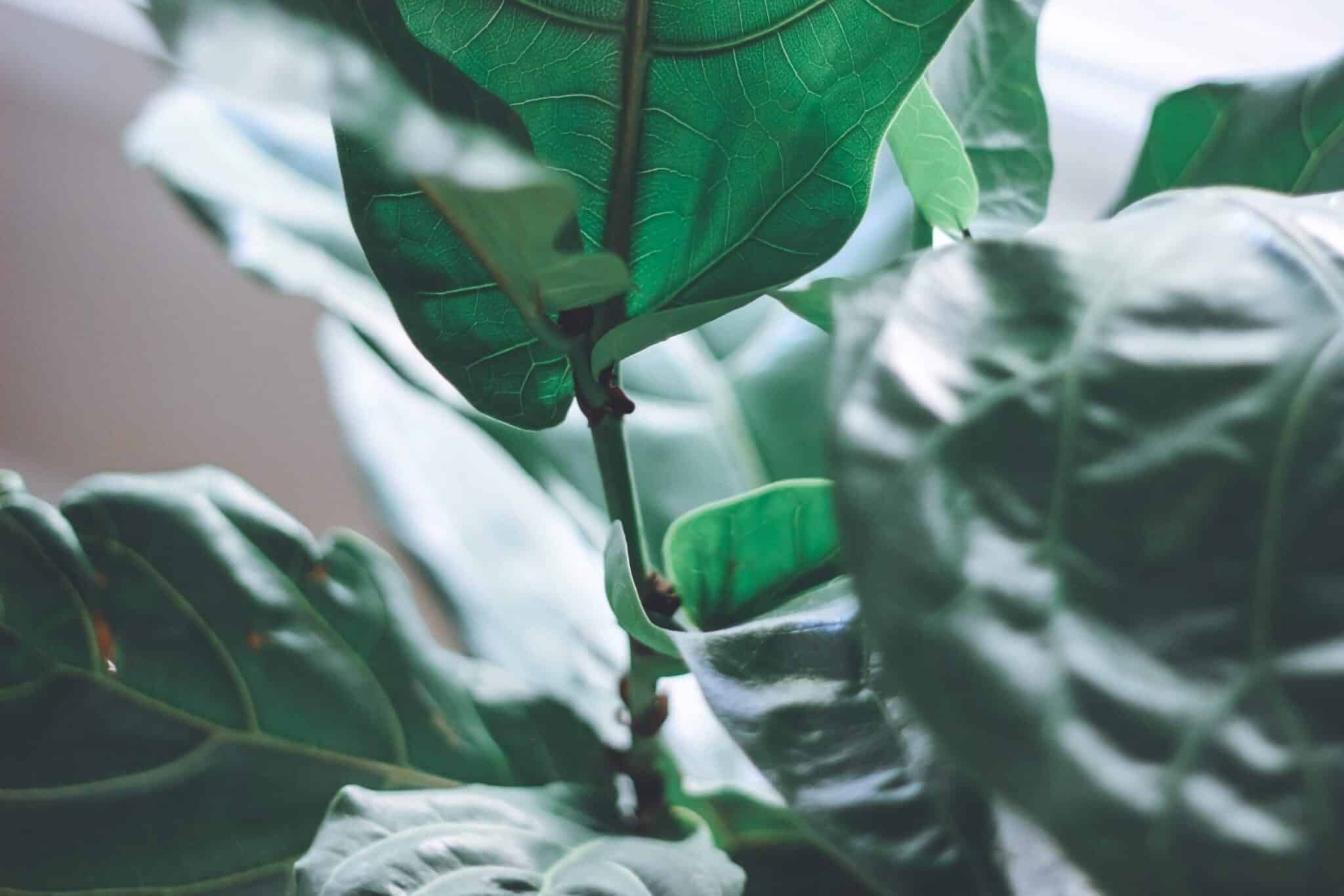
Speaking of live plants and artificial plants, how do you gauge the difference in benefits between the two? In your opinion, is one better than the other?
Smith: There isn’t one best option. For me, when I talk to designers about what plants we should implement in an office space, it’s more about what kind of plants are best suited for that particular situation.
Sometimes there’s no point in putting live plants in a space if we know the business wants plants that are in positions where they wouldn’t survive, such as a dark corner or up near the ceiling. They simply won’t get enough light and they will die. We had one client who was absolutely adamant about having a live planting display up against the ceiling with no light. We advised that the plants would start to die within a few weeks, but they were certain about what they wanted so we installed the planting. Sure enough, within a couple of weeks, the plans were wilting and dying, so we had to remove them.
When we advise people, we tell them the truth. Live plants are nice, but they have to be maintained and watered, which means that they either have to take care of them by themselves, or have a company like us come in every couple of weeks and maintain them. In contrast, artificial plants keep looking good and never droop or go brown. That said, they do collect more dust as they don’t repel dust or absorb toxins like live plants. It’s a constant trade-off between visual impact, longevity, and air quality.
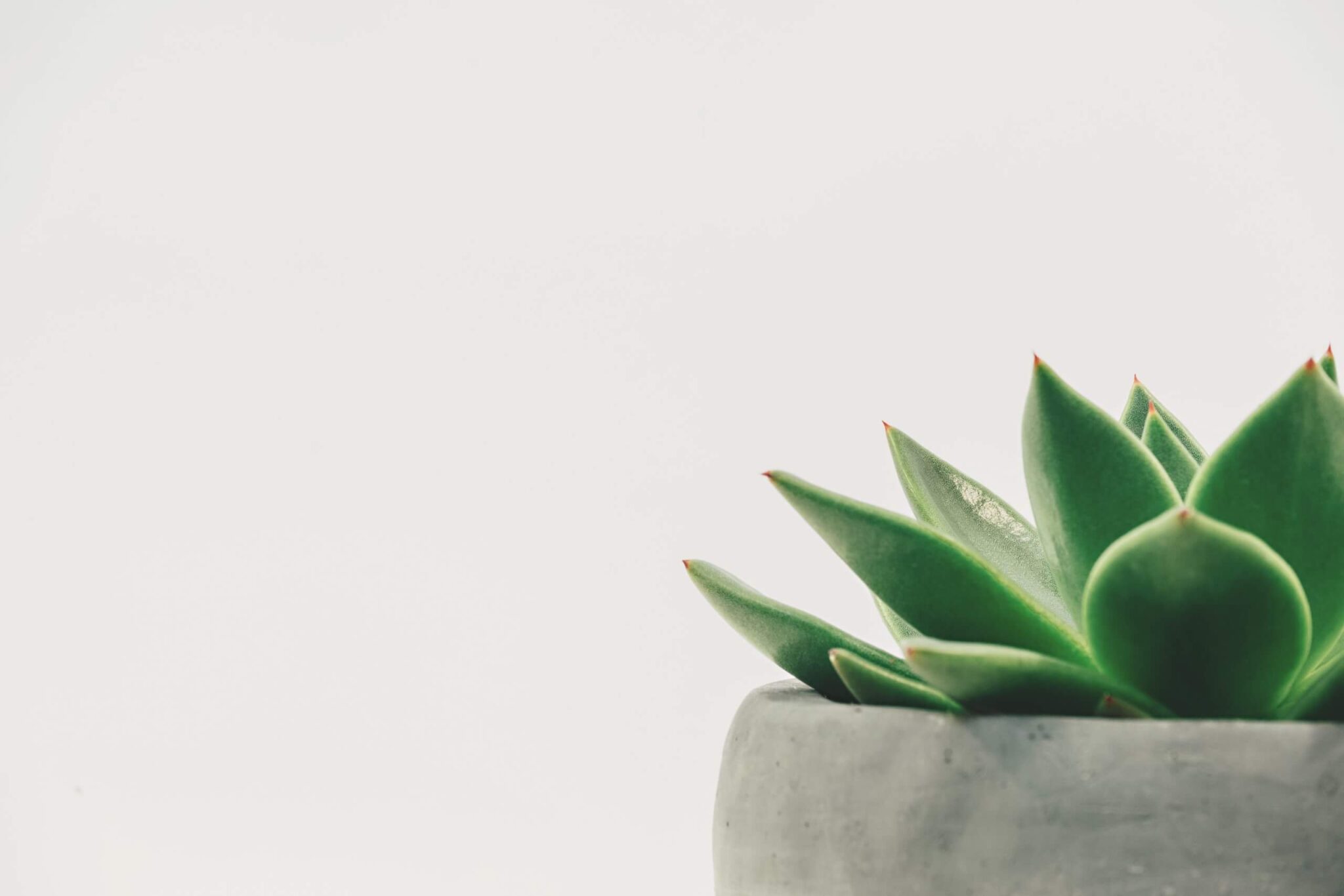
How do the physical parameters of an office space impact what kind of plants you should have in the space?
Smith: One of The biggest aspects tied to putting in live plants is light levels. As far as things such as ceiling height and the size of the office, they can generally go in as long as it fits comfortably among people. If it’s a pretty dark space; however, we’ll suggest that clients have plants that can cope with low light levels or that they have artificial plants.
Temperature is another factor for live plants. If it’s cold in an office space and you put in a plant that needs tropical temperatures—it really doesn’t work. On the other end, if you have a plant that doesn’t cope well with heat and you put it in a hot office space, it will dry up.
You can actually make any office green quite cheaply. It’s not expensive to do. If you get a company like us to do it, you still won’t break the bank. However, if your budget is really tight, We might suggest you just go to your local garden center, get some pots and plants, and enjoy some greenfinger time. In a sense, it’s hardly rocket science. The real key is to educate people.
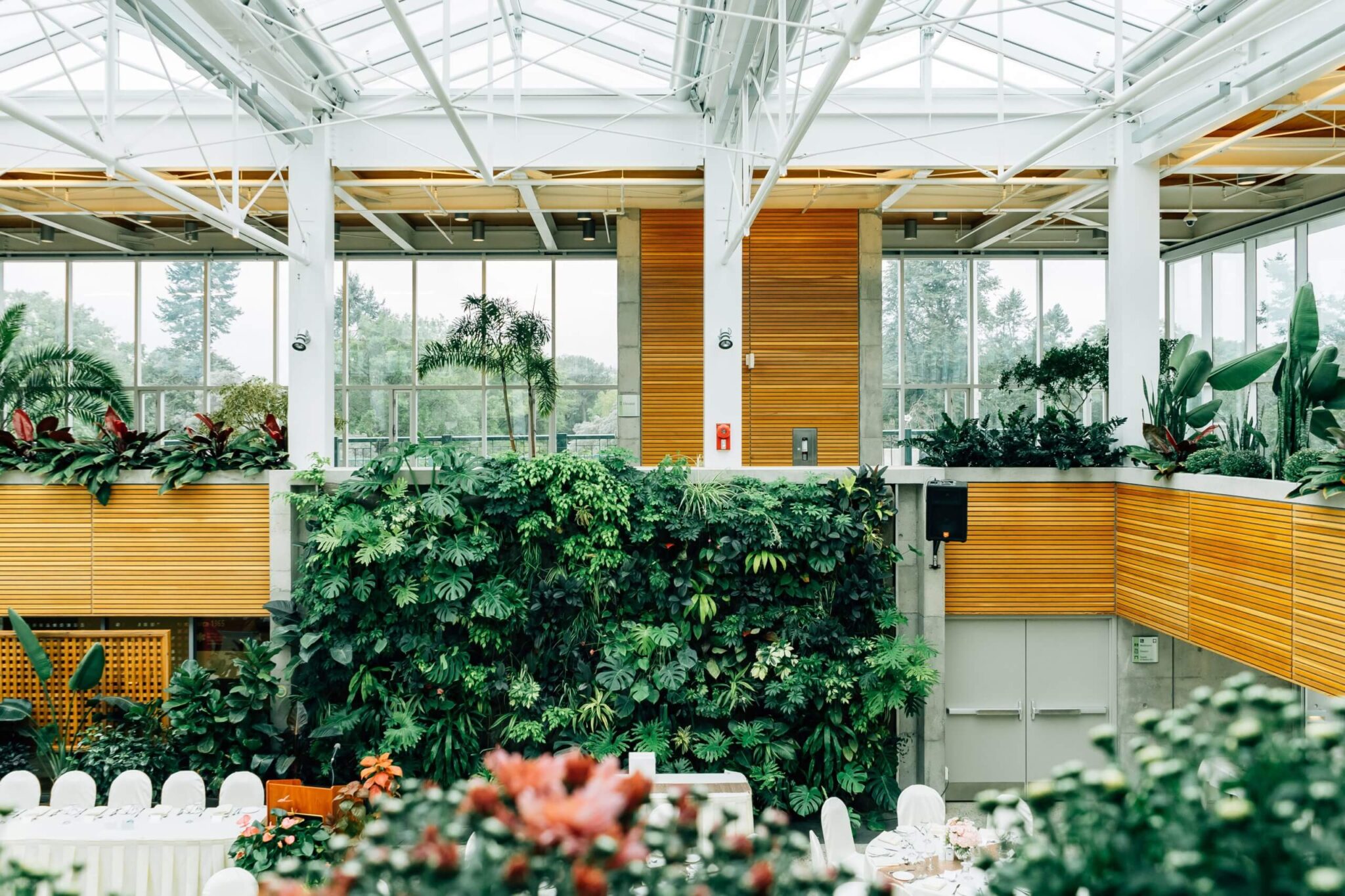
Why do you think the demand for biophilic design options has risen so much over the last few years and where do you see it headed in the future?
Smith: When I first joined Plant Plan almost four years ago, biophilia was not as big as it is today. I’d say in the last two and a half to three years, there’s been quite a massive push towards biophilic design and planting in office spaces.
I think more people nowadays genuinely see planting as an employee benefit, but also the design trends are such at the moment that plants are something office spaces need to have. Design trends will change and we may see a slight drop in popularity in the design aspect at some point, but as more awareness is raised about employee well-being, and architecture keeps on becoming more sustainable, I’d say plants are here to stay for good. At the moment, a lot of workplaces are focused on well-being and being environmentally friendly. They’re also now seeing the workplace benefits that biophilia brings beyond design. This is great news for employees looking for better and more fulfilling places to work.
Find out more about how Percy and Plant Plan can help your organization with its biophilic design needs at their website.
Do you prefer live or artificial plants in your office space? Join the conversation and leave us a comment below.
Photos: Alesia Kazantceva, Belle Hunt, Scott Webb



